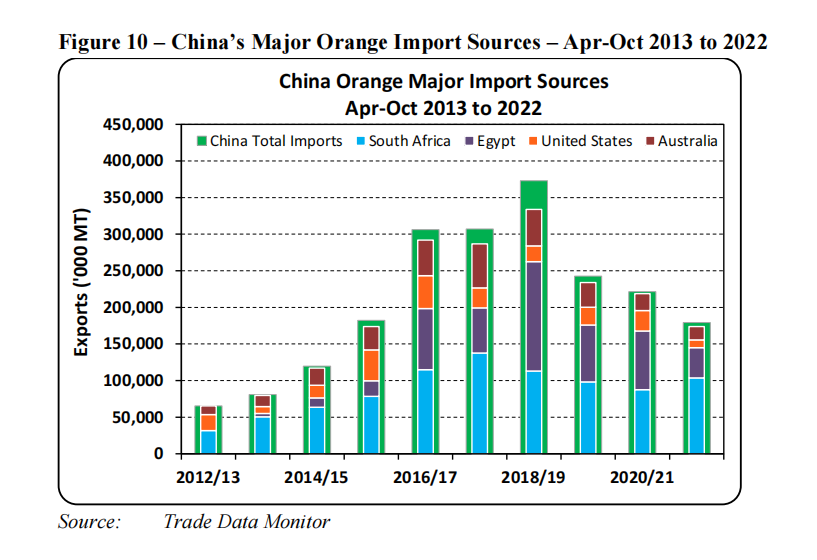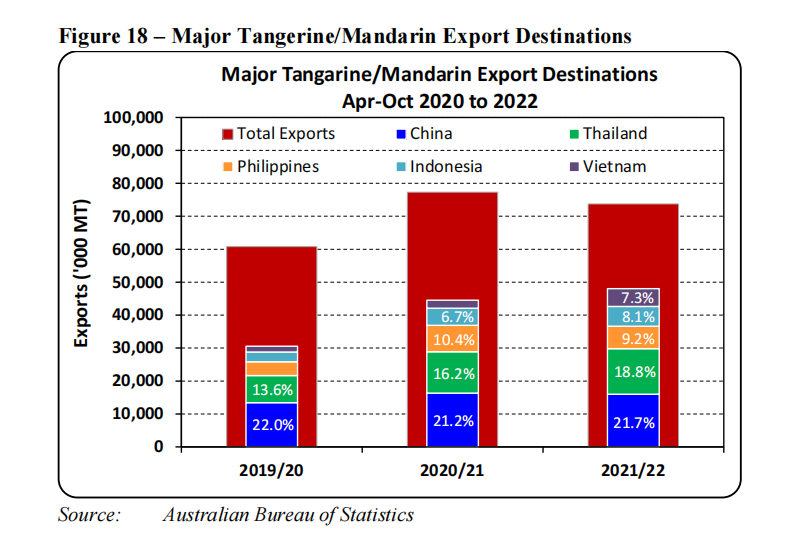

![[221230]dfa57b4358d9f52bcbab2e5fcae0a148.jpeg.jpeg [221230]dfa57b4358d9f52bcbab2e5fcae0a148.jpeg.jpeg](https://global.foodmate.net/file/upload/image/20221230/[221230]dfa57b4358d9f52bcbab2e5fcae0a148.jpeg.jpeg)
The United States Department of Agriculture recently released the "2022 Australian Citrus Annual Report". The total production of citrus in Australia in the 2022/23 season is expected to decline slightly, with orange production decreasing to 505,000 tons, while mandarin production increasing by 9% to 190,000 tons. Despite the reduced orange production, the quality is expected to return to more normal levels, which in turn will boost exports.
Despite lower production expectations, Australian orange exports are forecast at 180,000 tonnes in 2022/23, well above the 145,000 tonnes forecast for 2021/22. Australia exports fresh oranges to more than 35 countries, most of which are exported to Asia. The main export destinations are Japan, China and Hong Kong, which usually account for about 60% of the total export volume.

The biggest change in Australia's orange exports is a sharp drop in exports to China. Between April and October in the 2021/22 season, which typically accounts for around 90% of exports for the entire season, slightly more than 18,000 tonnes of oranges were exported to China, compared to 50,000 tonnes five years ago. The decline in orange exports to China is a manifestation of the general trend of reduced imports into China. China's orange imports peaked at nearly 373,000 tonnes between April and October in the 2018/19 season and fell to 179,000 tonnes in the 2021/22 season, more than halving in four years. This is mainly related to the rapid growth of China's orange production in recent years, but a small part of the reason is related to the limited demand caused by China's continuous COVID-19 lockdown in the past two years.
The 2022/23 season is expected to produce 190,000 tons of Australian oranges/tangerines, an increase of 9% from the 2021/22 season's forecast of 175,000 tons. The growth is mainly from young trees that are newly beginning to produce fruit, and more and more new plants enter the fruiting stage, increasing the overall production. As the weather conditions for the new season become more normal, the overall quality of the fruit is also expected to improve.
There are about 35 export destinations for Australian mandarins, with the top five countries accounting for half to two-thirds of all exports over the past three years. So far, China remains the main export destination in the 2021/22 season, accounting for about 22%.

Need help or have a question?
Send mail